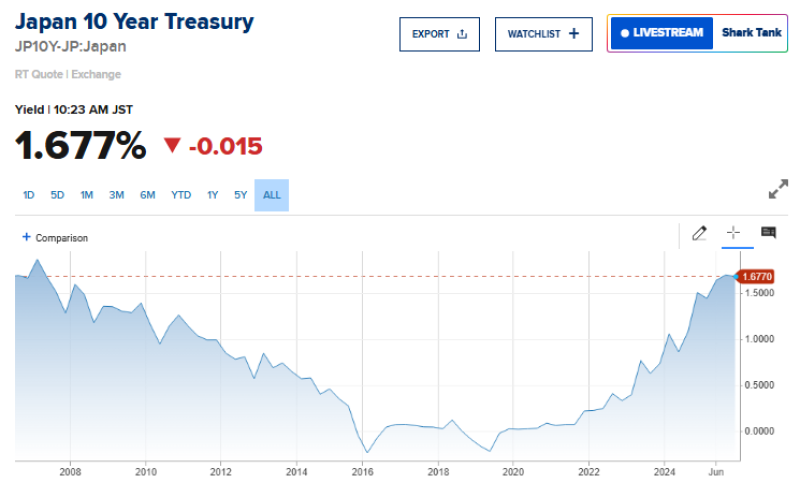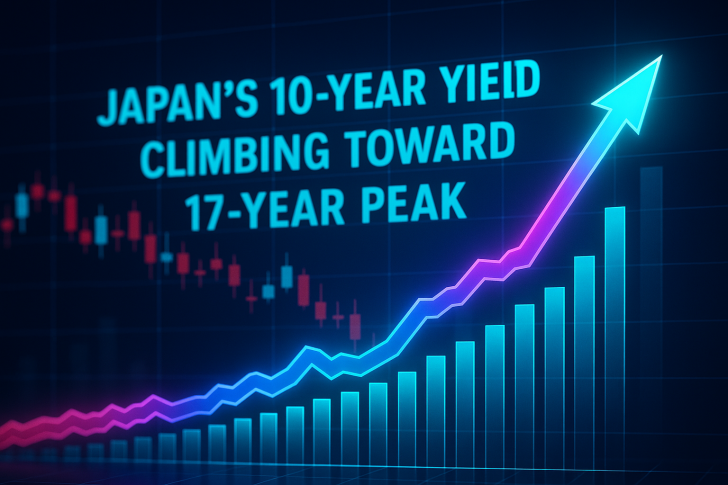Japan's bond market is experiencing a historic transformation. The yield on the 10-year Japanese government bond has climbed to 1.68%, a level last seen before the 2008 Global Financial Crisis. This surge marks a fundamental change as investors increasingly anticipate the end of decades-long ultra-loose monetary policy. Once regarded as the global benchmark for low yields, Japan is now heading in the opposite direction.
Long-Term Chart Shows a Major Structural Reversal
The chart reveals that the 10-year JGB yield has been climbing steadily since 2021, rising from near-zero levels to almost 1.7% by mid-2025. This represents a dramatic reversal from the previous 15 years when yields mostly stayed below 1%, held down by the Bank of Japan's Yield Curve Control policy.
According to Stock Sharks trader analysis, the graph shows three clear phases: from 2008 to 2016, there was a prolonged decline driven by deflation and heavy central bank intervention. Between 2016 and 2021, yields remained flat near 0% as YCC kept volatility in check.

From 2022 to 2025, yields have risen decisively, fueled by persistent inflation and expectations that the BoJ will normalize policy. The current reading near 1.68% sits just below pre-crisis highs, highlighting Japan's departure from its deflationary past.
Policy Drivers Behind the Yield Surge
Several overlapping forces are pushing Japan's bond yields higher. The BoJ has gradually loosened its YCC framework and signaled that negative interest rates could be eliminated entirely. Consumer prices have stayed above the 2% target for over a year, leading investors to demand higher yields. With the U.S. Federal Reserve and European Central Bank maintaining relatively tight policies, Japan's yield normalization brings the country more in line with global rate trends. This marks the strongest sign yet that bond investors, rather than central banks, are beginning to set long-term rates.
Market Implications and Outlook
The return of meaningful yields in Japan could create ripple effects across global markets. Higher domestic returns might encourage Japanese institutional investors to bring capital back home, potentially tightening liquidity elsewhere. Analysts caution that if the 10-year yield holds above 1.7%, the BoJ may face pressure to balance inflation control with debt sustainability. For now, the upward trend suggests investors are preparing for a gradual but lasting normalization of Japanese interest rates.
 Saad Ullah
Saad Ullah

 Saad Ullah
Saad Ullah


